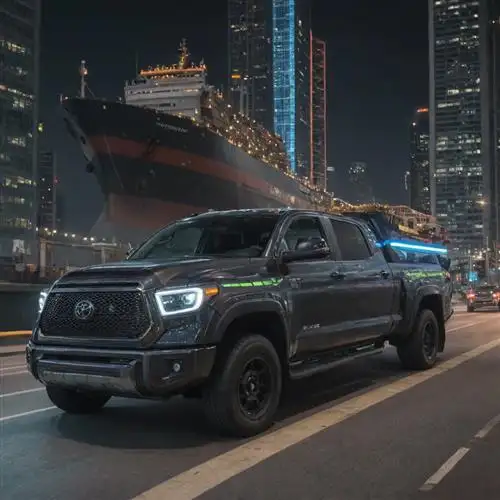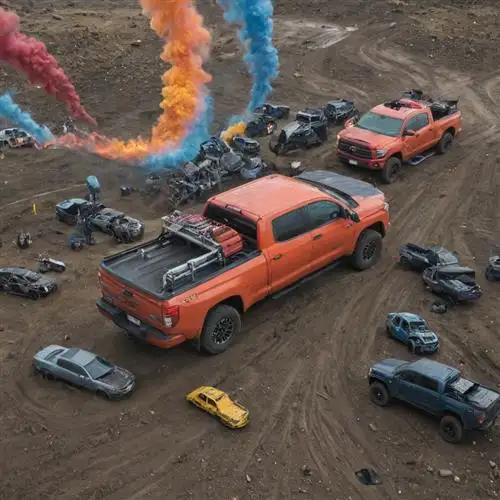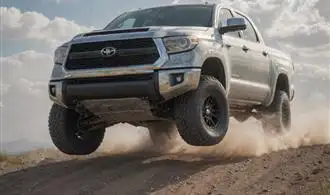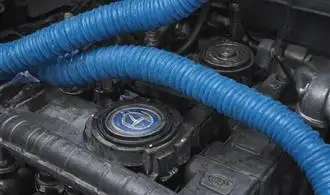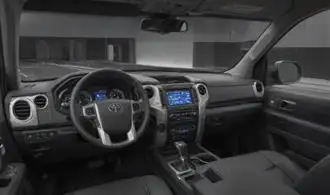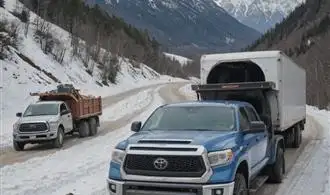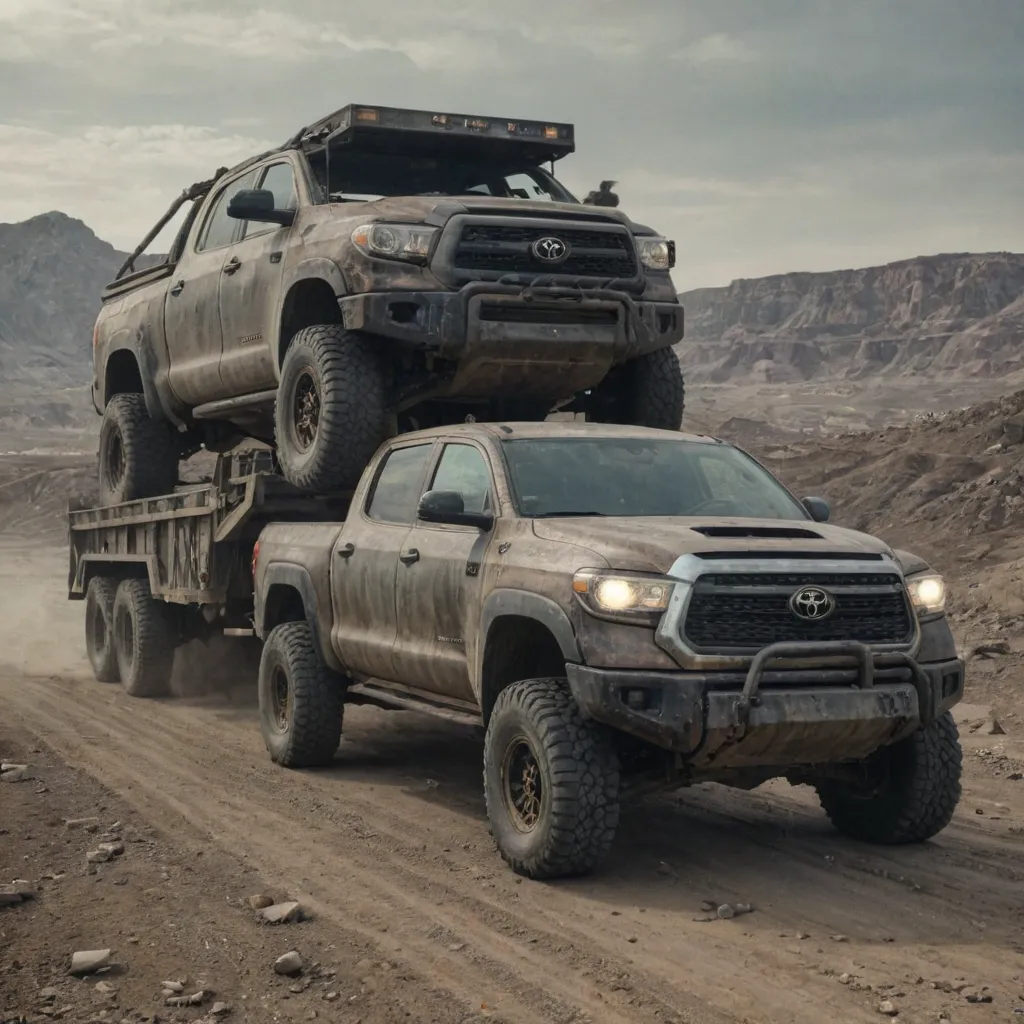
Understanding Towing Capacity
When it comes to towing safely with your Toyota Tundra, the key consideration is understanding your vehicle's towing capacity. This specification, measured in pounds, represents the maximum weight your Tundra can safely tow, including the weight of the trailer, cargo, and any passengers or equipment. Knowing this limit is crucial to avoid exceeding your Tundra's capabilities, which could lead to dangerous situations on the road.
Your Tundra's towing capacity is determined by a variety of factors, including the engine size, drivetrain configuration, and the specific model year and trim level. Generally, the larger the engine and the more robust the drivetrain, the higher the towing capacity. However, it's important to consult your owner's manual or the information provided by Toyota to get the exact figure for your Tundra. Exceeding the recommended towing capacity can put undue stress on your vehicle's components, potentially leading to breakdowns, reduced handling, and even safety risks.
In addition to the overall towing capacity, it's essential to consider the distribution of weight within the trailer or cargo you're towing. Proper weight distribution, with a greater percentage of the load over the trailer's axles, can help maintain stability and control during towing. Improper weight distribution can cause the trailer to sway, making it difficult to control and increasing the risk of an accident.
To ensure safe towing with your Toyota Tundra, it's recommended to invest in quality towing equipment, such as a sturdy hitch, trailer brakes, and load-distributing suspension systems. These accessories can help distribute the weight evenly and improve the overall handling and stability of your towed load. Additionally, familiarize yourself with the towing features and technologies available in your Tundra, such as Trailer Sway Control and Integrated Trailer Brake Controller, which can enhance the safety and performance of your towing experience.
Choosing the Right Towing Equipment
Choosing the Right Towing Equipment for Your Toyota Tundra is a critical aspect of towing safely. The appropriate selection of towing equipment can make all the difference in ensuring a smooth and secure towing experience. When it comes to towing with your Toyota Tundra, there are several key considerations to keep in mind.
First and foremost, it's essential to understand the towing capacity of your Tundra. This information can be found in your vehicle's owner's manual or by consulting with a Toyota dealership. Knowing the towing capacity will guide you in selecting the right hitch, trailer, and other towing accessories that are compatible with your vehicle's capabilities.
The type of hitch you choose is crucial. There are several hitch options available, each with its own advantages and considerations. A weight-distributing hitch, for instance, can help balance the load and improve the handling of your Tundra while towing a heavy trailer. Conversely, a traditional ball hitch may be sufficient for lighter towing tasks. It's important to carefully assess your towing requirements and select the hitch that best suits your needs.
The trailer you use is another critical component. Ensure that the trailer is properly sized and rated for your Tundra's towing capacity. Additionally, consider features such as brakes, suspension, and wheel size to ensure the trailer is stable and easy to maneuver. Proper trailer maintenance, including regular inspections and maintenance of the tires, lights, and coupling mechanisms, is also crucial for safe towing.
Alongside the hitch and trailer, it's essential to invest in high-quality towing accessories. This includes items such as safety chains, breakaway brakes, and trailer lighting. These accessories provide an added layer of safety and security, ensuring that your towed load remains stable and under control, even in unexpected situations.
Load Distribution and Weight Balance
Load Distribution and Weight Balance: When towing with your Toyota Tundra, proper load distribution and weight balance are crucial for safe and efficient towing. Ensuring your load is evenly distributed and the weight is properly balanced can significantly impact the handling, stability, and braking performance of your vehicle and trailer.
One of the key considerations for load distribution is the positioning of the trailer's payload. Heavier items should be placed closer to the trailer's axle, with lighter items towards the front and rear. This helps to maintain the proper tongue weight, which is the amount of the trailer's weight that rests on the Tundra's hitch. The recommended tongue weight typically ranges from 10% to 15% of the trailer's gross weight.
Exceeding the recommended tongue weight can lead to issues such as poor steering, increased sway, and decreased braking performance. Conversely, having too little tongue weight can cause the trailer to become unstable and potentially dangerous. To ensure proper weight distribution, use a tongue weight scale or have your loaded trailer weighed at a certified scale.
In addition to the trailer's payload, the distribution of cargo within your Tundra's cabin and bed can also impact the overall weight balance. Heavier items should be positioned as close to the centerline of the vehicle as possible, with lighter items towards the front and rear. This helps to maintain the Tundra's center of gravity and improve handling characteristics.
It's essential to consult your Tundra's owner's manual for the specific towing capacity, tongue weight, and payload ratings. These guidelines will help you determine the maximum weight you can safely tow and the appropriate load distribution for your setup. Exceeding these limits can lead to serious safety risks and potential legal consequences.
Driving Techniques for Towing
Safely towing a trailer or heavy load with your Toyota Tundra requires a specific set of driving techniques to maintain control and stability. Here are some essential tips to keep in mind:
Adjust Your Speed: When towing, it's crucial to drive at a slower, more controlled pace. The extra weight and momentum of the trailer can make it challenging to maintain control, especially when braking or maneuvering. Reduce your speed, particularly on curves, hills, and in inclement weather conditions.
Increase Following Distance: Increase the distance between your Tundra and the vehicle in front of you. This extra space will give you more time to react and brake safely, as the increased weight and length of the trailer require more stopping distance.
Use Lower Gears: Utilize lower gears when towing to take advantage of engine braking and maintain better control of your speed, especially when descending steep hills. Avoid relying solely on your brakes, as they can overheat and fade when subjected to heavy, sustained use.
Be Aware of Sway: Trailers can be prone to swaying, especially in windy conditions or when passing large vehicles. If you experience trailer sway, gently apply the brakes to stabilize the trailer, and avoid sudden maneuvers that could exacerbate the issue.
Anticipate Turns and Merges: Plan your turns and lane changes well in advance to account for the increased length and turning radius of your Tundra and trailer combination. Signal early and check your mirrors and blind spots thoroughly before making any maneuvers.
Adjust Your Driving Style: Towing a trailer requires a smoother, more deliberate driving style. Avoid sudden accelerations, braking, or steering inputs, as these can disrupt the stability of the trailer and potentially cause it to sway or fishtail.
Monitor Trailer Connections: Regularly check the connections between your Tundra and the trailer to ensure they remain secure and the trailer is properly balanced. This includes inspecting the hitch, safety chains, and electrical connections.
Safety Considerations for Towing
Towing a trailer or hauling heavy cargo with your Toyota Tundra requires a keen attention to safety. Proper preparation and understanding of the vehicle's capabilities are crucial to ensure a safe and successful towing experience. Here are some key safety considerations to keep in mind:
Load Capacity: Familiarize yourself with the Tundra's maximum towing capacity, payload capacity, and Gross Combined Vehicle Weight Rating (GCVWR). Ensure the total weight of the trailer, cargo, and passengers does not exceed these limits. Overloading can compromise the vehicle's handling, braking, and stability, putting you and others on the road at risk.
Trailer Brakes: If your trailer has its own braking system, make sure it is properly connected and functioning correctly. Trailer brakes work in conjunction with the Tundra's brakes to provide the necessary stopping power for the combined weight. Regularly inspect and maintain the trailer's braking system to ensure it is in good working order.
Weight Distribution: Proper weight distribution is crucial for safe towing. Load the trailer with the heaviest items positioned over the trailer's axles or as close to the trailer's center of gravity as possible. This helps maintain the Tundra's stability and control during acceleration, braking, and cornering.
Tire Pressure: Ensure the Tundra's tires, including the spare, are properly inflated to the recommended pressure. Also, check the trailer's tires and maintain the correct pressure as specified by the trailer manufacturer. Properly inflated tires can improve handling, fuel efficiency, and reduce the risk of blowouts.
Driving Techniques: Adjust your driving style when towing a trailer. Accelerate and brake gradually, allowing more distance for stopping. Take turns and corners wide to avoid the trailer encroaching on other lanes. Be aware of the increased length and turning radius when maneuvering, and leave ample space for lane changes and merging.
Visibility and Lighting: Ensure the trailer's lighting system is properly connected and functioning, including brake lights, turn signals, and running lights. Adjust the Tundra's side mirrors to provide a clear view of the trailer and the surrounding traffic. Consider using additional rearview mirrors or a backup camera to enhance your visibility.
Environmental Conditions: Be mindful of environmental factors that can affect towing safety, such as strong winds, steep hills, or slippery road conditions. Adjust your speed, braking, and driving techniques accordingly to maintain control of the vehicle and trailer combination.

